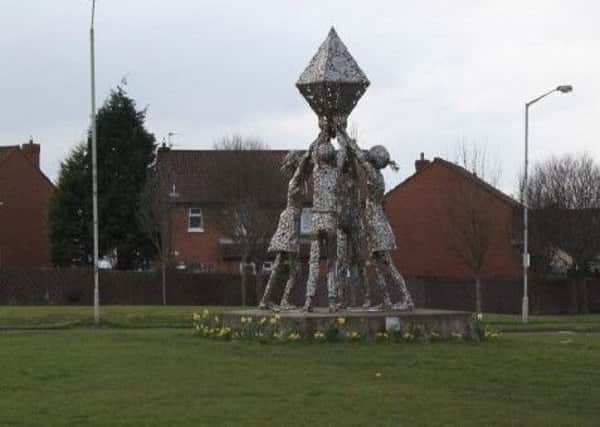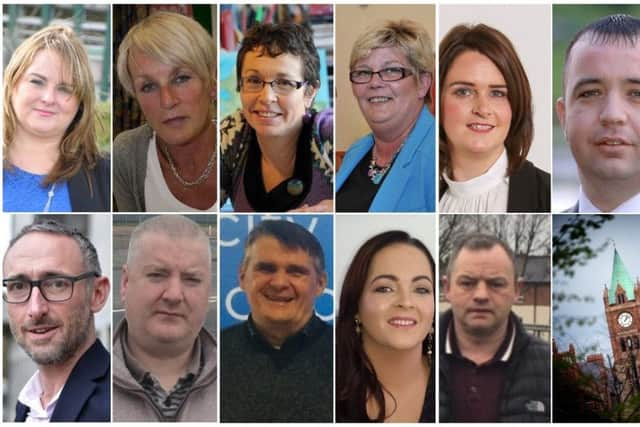Local Government Elections May 2: Focus on Ballyarnett Ward


The ward takes in Galliagh, Shantallow, Carnhill, Ballyarnett, Culmore and much of Skeoge.
The population of the whole area stood at 23,423 people in the 2011 census - making it the largest ward on the cityside, with six seats out of a total of 40 on Derry City & Strabane District Council to be filled in the forthcoming Local Government Election on Thursday, May 2.
A total of 11 candidates are seeking election.


Advertisement
Hide AdAdvertisement
Hide AdJust nine per cent of residents are aged 65 and over compared to a N. Ireland average of 15 per cent.
There are approximately 8,000 households in the Ballyarnett area, with 21 per cent of these one-person homes and 15 per cent housing five or more people. The largest category of households in the area is two people households at 27 per cent.
Major issues of concern for people across the area include unemployment and opportunities for residents, the roll out of Universal Credit, investment in facilities and community infrastructure for long-established areas such as Galliagh and Culmore and similarly in the increasingly expanding new housing estates.
Entire new estates, with hundreds of new homes, have swelled the population of the area over recent years across the Skeogelands along the border from Ballyarnett to the north and Upper Galliagh and Elagh areas to the south. There are even more new housing estates planned for this area over the coming years.
Advertisement
Hide AdAdvertisement
Hide AdGeographically the entire area also straddles the border with Inishowen in and Brexit and any border infrastructure could affect mobility across the region.
Major business zones include the Skeoge Industrial Estate and Northside, while local community facilities include Culmore, Shantallow and Leafair plus Templemore Sports Complex.
In terms of health, the 2011 Census reports that just over half of residents (52 per cent) described their general health as very good, while over a fifth of residents reported some degree of long-term health problem that limited their ability to undertake day to day activities.
The most common type of long-term condition related to mobility or dexterity, while 8 per cent of residents reported that they had suffered from a long-term mental health/psychological condition.
Advertisement
Hide AdAdvertisement
Hide AdOne in 10 people were living with long-term physical pain or discomfort.
In terms of employment, back in 2011, 58 per cent of residents were economically active, slightly below the council area average of 60 per cent.
Around one in four people was employed full-time, 14 per cent part-time and six per cent self-employed and 4 per cent full-time students.
Of those deemed economically inactive, 12 per cent were retired and eight per cent were students.
Advertisement
Hide AdAdvertisement
Hide AdA further seven per cent were looking after their family or homes and 11 per cent were long-term sick or disabled.
Over a third of people in employment were in a managerial/professional or technical role, while 10 per cent had a skilled trade as an occupation.
Meanwhile, 52 per cent of homes in the region were owner-occupied, 31 per cent social rented and 13 per cent private rented.
In terms of education, back in 2011 the majority of young people in the Ballyarnett ward aged 16 to 24 had achieved qualifications, with 10 per cent reaching Level 4 while 18 per cent of young people had no qualifications - more or less the average for the city and district.
Advertisement
Hide AdAdvertisement
Hide AdThe 11 candidates standing in the Ballyarnett Ward are, in alphabetical order:
*Nuala Crilly (People Before Profit)
*Angela Dobbins (SDLP)
*Sandra Duffy (Sinn Féin)
*Rory Farrell (SDLP)
*Anne McCloskey (Aontú)
*Danny McCloskey (Alliance)
*Caoimhe McKnight (Sinn Féin)
*Neil McLaughlin (Sinn Féin)
*Aileen Mellon (Sinn Féin)
*Brian Tierney (SDLP)
*Warren Robinson (Independent)